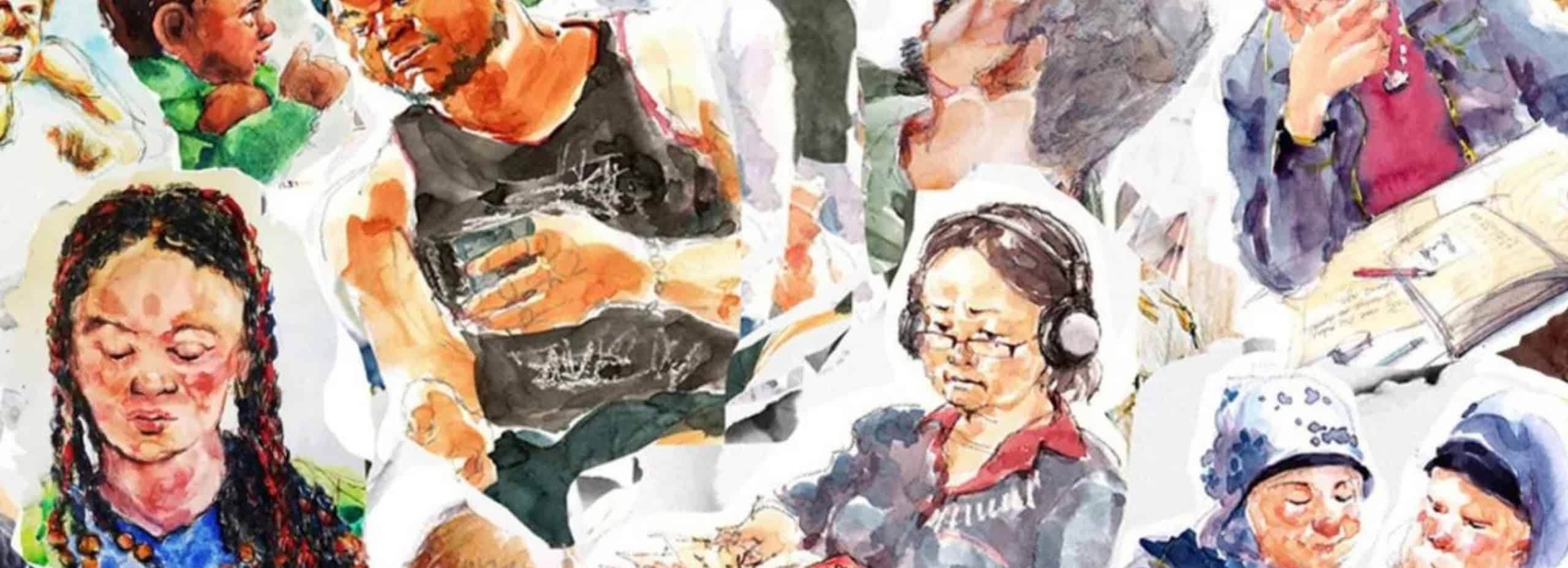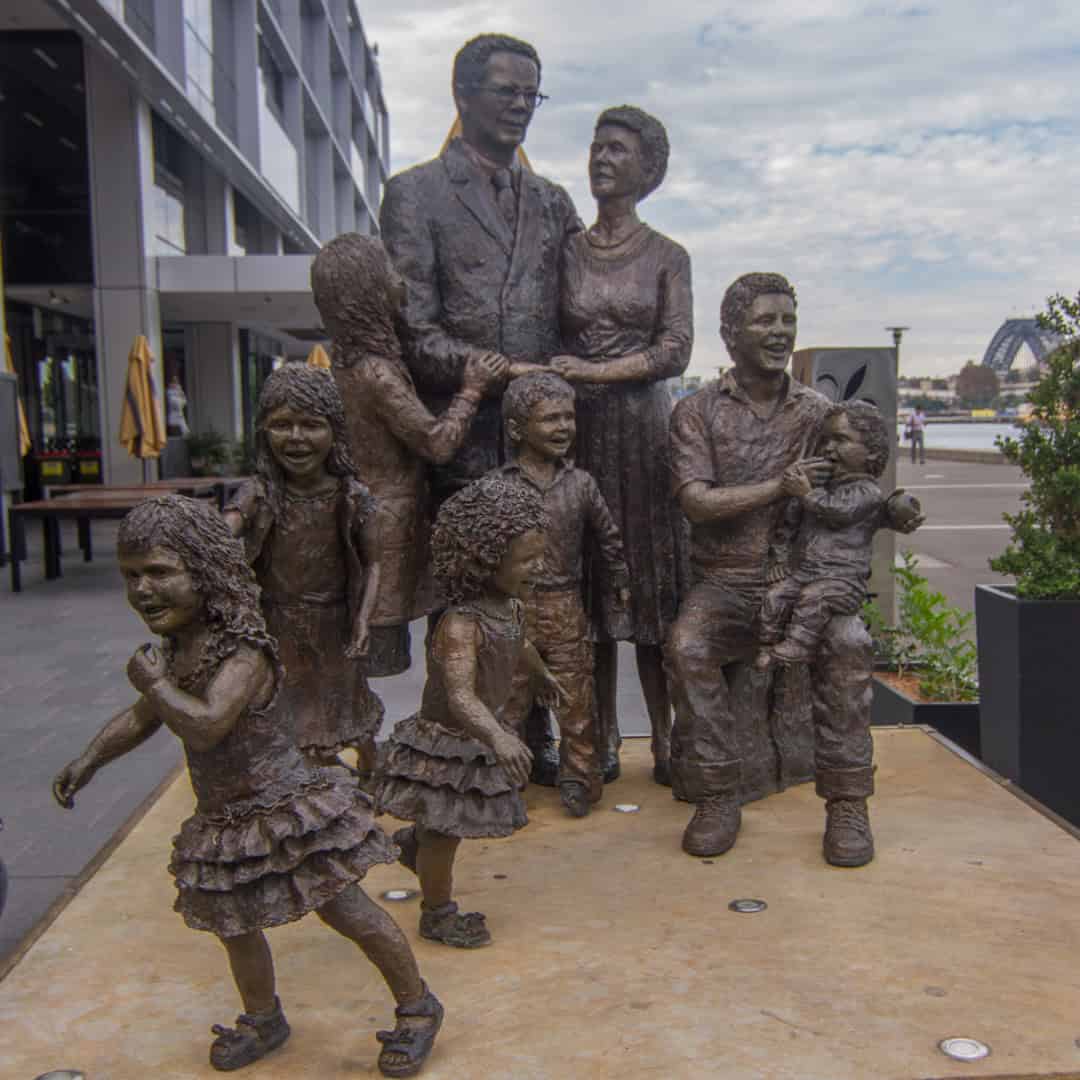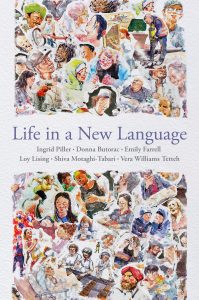Being treated as a migrant in Australia
Australian Academy of the Humanities 2024-07-12
 Extract from cover of Life in a new Language by artist Sadami Konchi.
Extract from cover of Life in a new Language by artist Sadami Konchi.Migration is in the spotlight again: migrants are being blamed for cost-of-living pressures, the housing crisis, and congested cities. Those who defend migration argue that migrants contribute to economic growth and constitute a revenue boost for Australian institutions.
The supporters of migration deal in abstracts (‘skills injection’, ‘productivity boost’, ‘accelerated innovation’) while the critics target real people. How do these discourses about migration affect newcomers and their experiences of settling in Australia?
Although migration is foundational to Australian nation building, migrants’ lived experience of settling in Australia remains poorly understood. Our new book Life in a New Language, just out from Oxford University Press, aims to change that.
Not every migrant is treated as a migrant
Migration from the British Isles has been the sine qua non of colonisation.
Every non-Indigenous person in Australia is a migrant or their descendant. Yet White migrancy has been consistently erased: for English-speaking Whites from the moment of arrival; and for non-English-speaking Whites from the second generation onwards, provided they speak English.
While White English-speaking migrancy has been rendered invisible, everyone else has become a visible and/or audible migrant, lumped together under the othering ragbag label of “culturally and linguistically diverse (CALD).”
The visible migrant
A condition of erasing the migrant status of White people in Australia has been to code all racial Others as migrants. As an Australian citizen from South Sudan told us: “I’m on migrant duty 24/7.”
The perception of racial Others as migrants does not necessarily reflect actual migrant status. For example, an Asian-looking second-generation Australian, a monolingual English speaker, told us that he was regularly treated as if he were a newcomer. Many of these experiences were benign. For instance, when he bought a seasonal travel pass, the ticket officer kindly told him how it would still be valid if he gave it to someone else “when you go home.”
Other experiences were vile and consisted of racist insults hurled by strangers out of passing cars.
Because non-White bodies are read as migrant bodies, becoming an Australian citizen does not remove the invisible border between “Australian” and “migrant.” After almost 20 years as an Australian citizen, Eva from Chile, for example, stated:
“Because here we are the foreigners. No matter what the papers say. And you feel it most of the time. In the silly things, people make you feel it.”
The audible migrant
 ‘Life in a Suitcase’ by Terrance Plowright (2010) in Pyrmont New South Wales was erected to ‘celebrate Australian immigration’.
‘Life in a Suitcase’ by Terrance Plowright (2010) in Pyrmont New South Wales was erected to ‘celebrate Australian immigration’.For Eva, being made to feel like a forever foreigner was connected to the Spanish accent in her English.
Erasing the migrancy of the colonisers has also entailed inscribing English as the language of the land. Therefore, not speaking English in Australia or speaking it “with an accent” is also treated as a marker of migrant status.
We put “with an accent” in quotation marks because technically everyone has an accent. Speech without an accent is impossible. But some accents are considered natural, neutral, and normative, while others are treated as signals of deviance from an imagined norm.
Those who learn English later in life as an additional language usually retain an accent marked by the contours of their first language. These accents make them audible as migrants.
The othering of audible migrants in interaction manifests most frequently in the question “Where are you from?”
It is a question visible and/or audible Others come to dread. The intent behind the question may be benign or vile, and many things in between, but, for the recipient, it is a perpetual reminder of their non-belonging.
The longer someone has lived in Australia, the more humiliating the question becomes, as it literally puts the questioned person back to Square One: the moment of arrival forever defining one’s being.
Between visibility and audibility
Visibility and audibility intersect in complex ways. White people are expected to speak English. When their accents bear traces of other languages an expectation mismatch arises. As a result, their accents may be perceived as particularly jarring and alien.
At the same time, White people can imagine a time when their accents will disappear and they will be treated as full Australians, if not in their lifetime, then in their children’s generation.
By contrast, the experiences of racial Others are more complicated. Particularly in the workplace, linguistic exclusion often can seem like a pretext for racial exclusion. For instance, an administrative assistant from Kenya was rejected for a receptionist role on the grounds that her English was too difficult for customers to understand, but accepted for a backstage role where customer contact was only over the phone.
Reimagining our diverse society
 Australia is a highly diverse society, with a third of the population born overseas and a quarter speaking a language other than English at home.
Australia is a highly diverse society, with a third of the population born overseas and a quarter speaking a language other than English at home.
Yet, ideologically, Australia continues to be imagined as a White English-speaking nation. As a result, visible and audible Others are treated as forever newcomers at the imagined border between “we grew here” and “you flew here.”
While this ideology is deeply out of touch, it continues to be consequential for the settlement experiences of an ever-increasing part of our population. It is time we reimagined what it means to be Australian and stopped treating those marked as migrants as a problem.
Life in a New Language is co-authored by Ingrid Piller, Donna Butorac, Emily Farrell, Loy Lising, Shiva Motaghi-Tabari and Vera Williams Tetteh. The book is the result of an ethnographic data-sharing project which involved reanalysis of data from six different research projects conducted mostly at Macquarie University between 2000 and 2020.
The post Being treated as a migrant in Australia appeared first on Australian Academy of the Humanities.